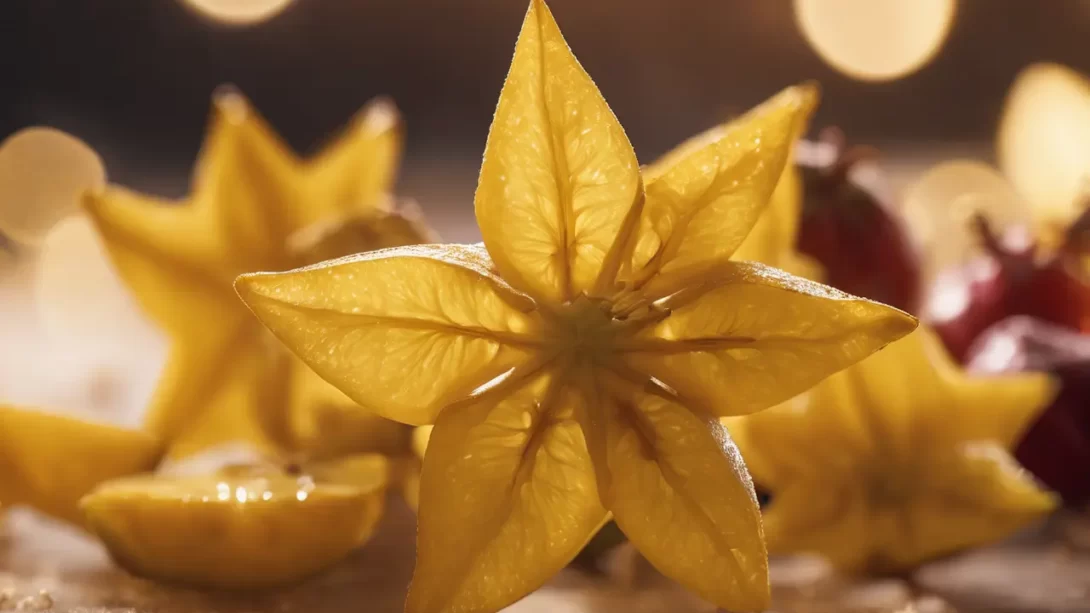Starfruit, also known as carambola, is a tropical fruit known for its distinctive star shape when cut across. While it’s a refreshing treat for humans, especially in warm climates, it’s important for dog owners to understand which fruits are safe for their canine companions. This article explores the suitability of starfruit in a dog’s diet, highlighting the potential risks and safety considerations.
What Is Starfruit?
Starfruit originates from Southeast Asia and is prized for its sweet and slightly tart flavor. It’s easily recognizable by its unique star shape when sliced and has a waxy, edible skin. For humans, starfruit is a low-calorie fruit packed with vitamins C and B, fiber, and antioxidants. However, the question remains: is this exotic fruit safe for dogs to consume?
Potential Risks of Starfruit for Dogs
The primary concern with starfruit for dogs is its potential toxicity. Starfruit contains substances that can be harmful to dogs, particularly those with pre-existing kidney issues. The fruit contains soluble oxalates and caramboxin, which can adversely affect a dog’s kidneys and nervous system. Symptoms of starfruit poisoning in dogs can include lethargy, vomiting, diarrhea, and in severe cases, seizures or neurological problems. Due to these risks, it’s generally advised to avoid giving starfruit to dogs.
Safe Fruit Alternatives for Dogs
If you’re looking to treat your dog with fruit, there are several safe and healthy options. Apples (without seeds), bananas, blueberries, and watermelon (seedless) are all excellent choices. These fruits are not only safe for dogs but also provide various nutritional benefits. Apples are a good source of vitamins A and C, as well as fiber. Bananas are rich in potassium and vitamins, while blueberries are packed with antioxidants. Watermelon is hydrating and also contains vitamins A, B6, and C. Always introduce these fruits in moderation and ensure they are properly prepared – seeds, stems, and pits should be removed to prevent choking or intestinal blockage.
How to Respond to Starfruit Ingestion
If your dog accidentally ingests starfruit, it’s important to act quickly. The first step is to remove any remaining starfruit from your dog’s reach. Monitor your pet closely for any signs of distress, such as vomiting, diarrhea, or changes in behavior. If you observe any concerning symptoms or if your dog has a known kidney condition, contact your veterinarian immediately. In cases of starfruit ingestion, prompt veterinary attention is crucial.
Preventative Measures
To prevent accidental ingestion, it’s important to keep starfruit and other potentially harmful foods out of your dog’s reach. Be mindful of what you’re eating around your dog and store harmful foods securely. Training your dog to avoid certain foods can also be beneficial. Teach commands like “leave it” to discourage them from picking up or eating unsafe items. Regular training sessions and positive reinforcement can help instill these important behaviors.
Conclusion
The exotic allure of starfruit might be tempting to share with your furry friend, but as we’ve explored, it’s not a safe option for dogs. The potential risks, particularly to a dog’s kidneys and nervous system, outweigh any nutritional benefits this fruit might have. Responsible pet ownership involves being aware of such dietary hazards and making informed choices about what to feed our canine companions.
It’s always best to err on the side of caution and stick to fruits that are known to be safe for dogs. The alternatives mentioned, like apples, bananas, blueberries, and watermelon, are not only safer but can also contribute positively to your dog’s diet when given in moderation. Remember, treats and fruits should only make up a small portion of your dog’s diet, which should be balanced and nutritionally complete.
In summary, while starfruit is a nutritious and delicious fruit for humans, it’s a risk for dogs and should be avoided. Always prioritize your dog’s health and safety by keeping potentially harmful foods out of reach and sticking to dog-friendly dietary options. If you’re ever in doubt about whether a certain food is safe for your dog, consult with your veterinarian. They can provide tailored advice based on your dog’s health, breed, and dietary needs. By being proactive and informed, you can ensure a happy, healthy, and safe life for your beloved pet.




